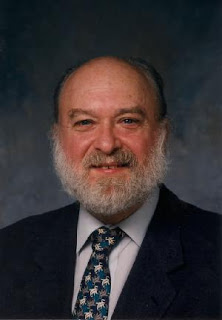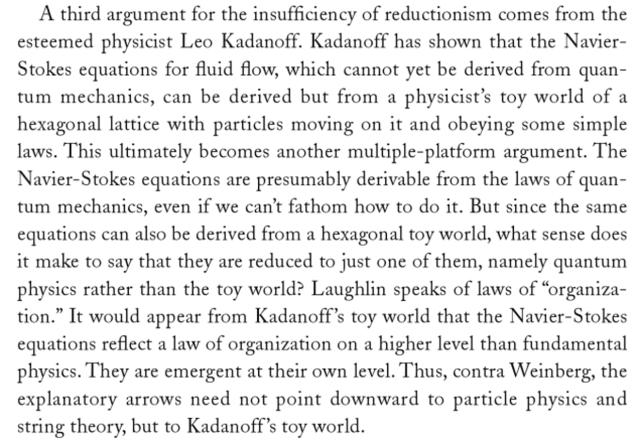| Online: | |
| Visits: | |
| Stories: |

| Story Views | |
| Now: | |
| Last Hour: | |
| Last 24 Hours: | |
| Total: | |
Physicist Leo Kadanoff on reductionism and models: “Don’t model bulldozers with quarks.”
I have been wanting to write about Leo Kadanoff who passed away a few weeks ago. Among other things Kadanoff made seminal contributions to statistical physics, specifically the theory of phase transitions, that were undoubtedly Nobel caliber. But he should also be remembered for something else – a cogent and very interesting attack on ‘strong reductionism’ and a volley in support of emergence, topics about which I have written several times before.
Kadanoff introduced and clarified what can be called the “multiple platform” argument. The multiple platform argument is a response to physicists like Steven Weinberg who believe that higher-order phenomena like chemistry and biology have a strict on-on-one relationship with lower-order physics, most notably quantum mechanics. Strict reductionists like Weinberg tell us that “the explanatory arrows always point downward”. But leading emergentist physicists like P W Anderson and Robert Laughlin have taken objection to this interpretation. Some of their counterarguments deal with very simple definitions of emergence; for instance a collection of gold atoms have a property (the color yellow) that does not directly flow from the quantum properties of individual gold atoms.
Kadanoff further revealed the essence of this argument by demonstrating that the Navier-Stokes equations which are the fundamental classical equations of fluid flow cannot be accounted for purely by quantum mechanics. Even today one cannot directly derive these equations from the Schrodinger equation, but what Kadanoff demonstrated is that even a simple ‘toy model’ in which classical particles move around on a hexagonal grid can give rise to fluid behavior described by the Navier-Stokes equations. There clearly isn’t just one ‘platform’ (quantum mechanics) that can account for fluid flow. The complexity theorist Stuart Kauffman captures this well in his book “Reinventing the Sacred“.
Others have demonstrated that a simple ‘bucket brigade’ toy model in which empty and filled buckets corresponding to binary 1s and 0s (which in turn can be linked to well-defined quantum properties) that are being passed around can account for computation. Thus, as real as the electrons obeying quantum mechanics which flow through the semiconducting chips of a computer are, we do not need to invoke their specific properties in order to account for a computer’s behavior. A simple toy model can do equally well.
Kadanoff’s explanatory device is in a way an appeal to the great utility of models which capture the essential features of a complicated phenomenon. But at a deeper level it’s also a strike against strong reductionism. Note that nobody is saying that a toy model of classical particles is a more accurate and fundamental description of reality than quantum mechanics, but what Kadanoff and others are saying is that the explanatory arrows going from complex phenomena to simpler ones don’t strictly flow downward; in fact the details of such a flow cannot even be truly demonstrated.
In some of his other writings Kadanoff makes a very clear appeal based on such toy models for understanding complex systems. Two of his statements provide the very model of pithiness when it comes to using and building models:
“1. Use the right level of description to catch the phenomena of interest. Don’t model bulldozers with quarks.
2. Every good model starts from a question. The modeler should aways pick the right level of detail to answer the question.”
“This lesson applies with equal strength to theoretical work aimed at understanding complex systems. Modeling complex systems by tractable closure schemes or complicated free-field theories in disguise does not work. These may yield a successful description of the small-scale structure, but this description is likely to be irrelevant for the large-scale features. To get these gross features, one should most often use a more phenomenological and aggregated description, aimed specifically at the higher level.
Source: http://wavefunction.fieldofscience.com/2015/11/leo-kadanoff-on-reductionism-and-models.html





